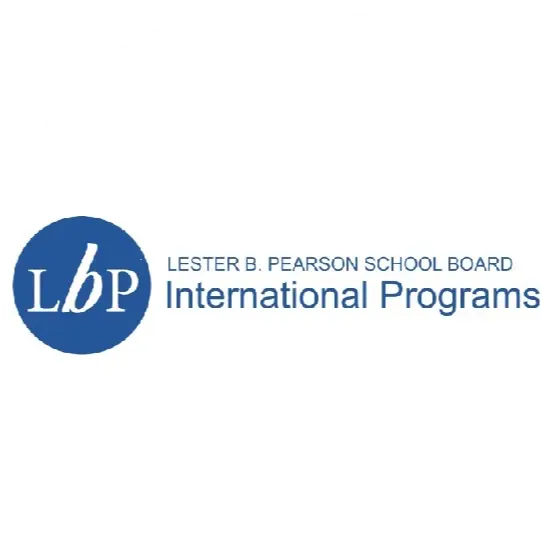• TOEFL
TOEFL Reading: Negative Factual Questions
4449 Reads
3 min Read
Test of English as a Foreign Language or TOEFL is a friendly and convenient English-language test with the quality that universities respect. It measures the four core language skills: listening, reading, writing and speaking. The test format presents short, engaging tasks related to both academic situations and everyday life.
The TOEFL Reading practice section assesses how well can one read and understand materials used in an academic environment. It is comprised of four reading passages, each approximately 700 words long, with 10 questions per passage and approximately 72 minutes to complete it. Reading passages are excerpts from university- level textbooks and cover variety of subjects. All the information needed to answer the questions could be extracted from the passages.
Factual Information and Negative Factual Information
- Factual Information questions ask to recognize information that is explicitly stated in the text. These may include facts such as major ideas, supporting details, or definitions.
- Negative factual information questions are similar, except that, instead of only one answer being true, three of the four answers are true, and it needs to be determined which one is false.
- For negative factual information questions, look for the words ‘NOT’ or ‘EXCEPT’ in capital letters.
Negative Factual Information - According to the paragraph, which of the following is NOT true?
- The author mentions all of the following EXCEPT.
Here are some tips for answering negative factual information questions: - Don’t automatically select an answer just because it contains words or phrases from the paragraph. Make sure to carefully evaluate each option to determine if it is correct.
- For the negative factual information questions, remember to look for an answer that either isn’t in the paragraph, or directly contradicts information in the paragraph.
For Negative Factual Information questions: - Answer is either not in the paragraph, or it contradicts information in the paragraph.
Here is a paragraph about meteorite impacts from the reading passage with the Negative Factual Information question.
This impact released an enormous amount of energy, excavating a crater about twice as large as the lunar crater Tycho. The explosion lifted about 100 trillion tons of dust into the atmosphere, as can be determined by measuring the thickness of the sediment layer formed when this dust settled to the surface. Such a quantity of material would have blocked the sunlight completely from reaching the surface, plunging Earth into a period of cold and darkness that lasted at least several months. The explosion is also calculated to have produced vast quantities of nitric acid and melted rock that sprayed out over much of Earth, starting widespread fires that must have consumed most terrestrial forests and grassland. Presumably, those environmental disasters could have been responsible for the mass extinction, including the death of the dinosaurs.
According to paragraph, all of the following statements are true of the impact at the end of the Cretaceous period EXCEPT:
- A large amount of dust blocked sunlight from Earth.
- Earth became cold and dark for several months.
- New elements were formed in Earth’s crust.
- Large quantities of nitric acid were produced.
Tips for Negative Factual Information Questions:
- Usually a Negative Factual Information question requires to check more of the passage than a Factual Information question. The three choices that are mentioned in the passage may be spread across a paragraph or several paragraphs.
- In Negative Factual Information questions, the correct answer either directly contradicts one or more statements in the passage or is not mentioned in the passage at all.
- After finishing a Negative Factual Information Question, check answer to make sure that the task is accurately understood.
Here are some tips to improve reading skills:
- Read news and magazine articles about various subjects as often as one can as well as practice taking notes.
- While taking notes or writing down, one needs to analyse, which piece of information is relevant or credible.
- Taking down short relevant notes helps remember important information from reading material.
TOEFL reading comprehension and practice is required to adapt specifically to negative factual information questions. A completely comprehensive preparation course on TOEFL exam is offered by Canamprep with most effective structured and organized practice tests.
FAQ
Get great articles direct to your inbox
The latest news, articles, and resources, sent straight to your inbox every month.
Popular Universities to Study Abroad
World class education waiting for you.

UP Education - Yoobee College of Creative Innovation - Wellington Campus
Wellington, New Zealand • 12 Programmes
Tuition Fee : NZD 0-0 / year


University of Central Lancashire - Westlakes Campus
England, UK • 5 Programmes
Tuition Fee : GBP 14000-28000 / year

.png)
Algonquin College - Pembroke Campus
Ontario, Canada • 19 Programmes
Tuition Fee : CAD 15000-29500 / year

Southern Illinois University Edwardsville
Illinois, USA • 236 Programmes
Tuition Fee : USD 18000-18500 / year

Dimensions International College - Main Campus
North Region, Singapore • 38 Programmes
Tuition Fee : SGD 0-0 / year

Lester B. Pearson School Board - Pearson Adult Career Centre (PACC)
Quebec, Canada • 13 Programmes
Tuition Fee : CAD 9500-48500 / year
Popular English Language Proficiency Exams
Blogs and Articles
Curated content to keep you updated on the latest education trends, news and more.
ACT vs. SAT: Which One to Choose?
Updated on • Apr 12,2025 05:40 PM IST • Study Abroad
Updated on • Apr 11,2025 05:53 PM IST • IELTS
Backlog Certificate: A Complete Guide
Updated on • Apr 11,2025 01:47 PM IST • Study Abroad Guidance
PTE Score Chart 2025: PTE Exam Scoring System & Calculation
Updated on • Apr 09,2025 05:37 PM IST • PTE
Master's in Computer Science in the USA
Updated on • Apr 08,2025 05:59 PM IST • USA
Top Trending MBA Specialisations in 2025
Updated on • Apr 08,2025 04:47 PM IST • Study Abroad
Describe Your Hometown IELTS Speaking Part 1 Topic
Updated on • Apr 07,2025 05:50 PM IST • IELTS
How to Get a Job in USA in 2025
Updated on • Apr 07,2025 03:19 PM IST • USA
Highest Paying Jobs in the World
Updated on • Apr 01,2025 05:31 PM IST • Study Abroad
Student Life in Ireland in 2025
Updated on • Mar 29,2025 05:50 PM IST • Ireland
Top Public Universities in Germany
Updated on • Mar 26,2025 04:33 PM IST • Germany
Top Universities for Masters in Ireland in 2025
Updated on • Mar 25,2025 04:36 PM IST • Ireland
Cost of Living in Singapore for Indian Students in 2025
Updated on • Mar 22,2025 11:57 AM IST • Singapore
PTE vs IELTS : Know the Difference and Which is Easier?
Updated on • Mar 21,2025 03:38 PM IST • IELTS
Updated on • Mar 20,2025 10:19 AM IST • Germany
Updated on • Mar 12,2025 11:20 AM IST • Ireland
Updated on • Mar 11,2025 01:18 PM IST • USA
Best Countries to Study Abroad for Indian Students in 2025
Updated on • Mar 08,2025 01:24 PM IST • Study Abroad
Updated on • Mar 05,2025 12:19 PM IST • UK
Fastest Growing Job Sectors in Germany in 2025
Updated on • Feb 28,2025 04:04 PM IST • Germany
Related Blogs and Articles
A little effort to provide an authentic and reliable content for keen readers!!
How can I Master TOEFL Vocabulary?
Updated on • 16-08-2024 • TOEFL
Updated on • 13-08-2024 • TOEFL
TOEFL Accepted Universities in USA
Updated on • 08-07-2024 • TOEFL
How Long is the TOEFL Score Valid?
Updated on • 08-03-2024 • TOEFL
A Guide to Minimum TOEFL Score for Canada Student Visa
Updated on • 12-02-2024 • TOEFL
TOEFL score chart: TOEFL iBT Scores
Updated on • 08-02-2024 • TOEFL
TOEFL Accepted Universities in UK
Updated on • 31-01-2024 • TOEFL
TOEFL Inference Questions: Examples, Tips and Strategies to Answer Inference Questions
Updated on • 12-09-2023 • TOEFL
TOEFL Writing Topics and Tips to Prepare for the TOEFL Exam
Updated on • 01-09-2023 • TOEFL
TOEFL Reading: An Introduction to TOEFL Reading Section
Updated on • 08-08-2023 • TOEFL
Types of Questions in TOEFL Speaking Task 1
Updated on • 05-08-2023 • TOEFL
TOEFL Reading Factual Questions: Samples, and Tips for Reading Factual Information Questions
Updated on • 02-08-2023 • TOEFL
TOEFL Preparation: Learn the Best Tips & Strategies
Updated on • 14-07-2023 • TOEFL
TOEFL Listening: An Introduction to TOEFL Listening Section
Updated on • 11-07-2023 • TOEFL
TOEFL or IELTS: Which test should you take to study abroad?
Updated on • 08-07-2023 • TOEFL
Know The Differences Between IELTS and TOEFL!
Updated on • 22-06-2023 • TOEFL
TOEFL Exam Fee in India 2023 : Everything You Need to Know
Updated on • 22-06-2023 • TOEFL
Top Tips to ace Your TOEFL Listening Module
Updated on • 22-06-2023 • TOEFL











